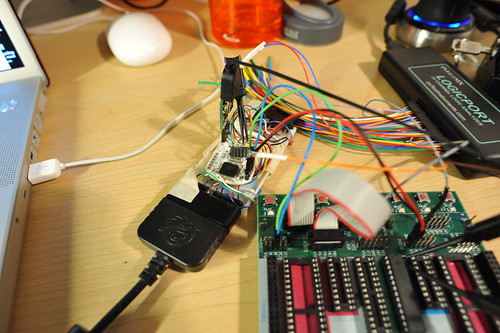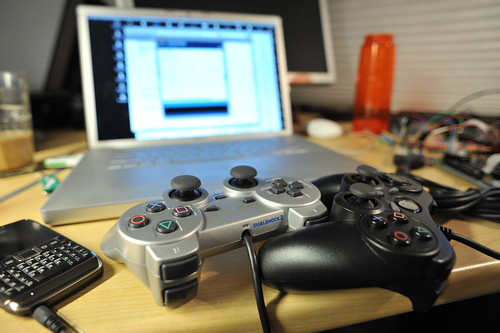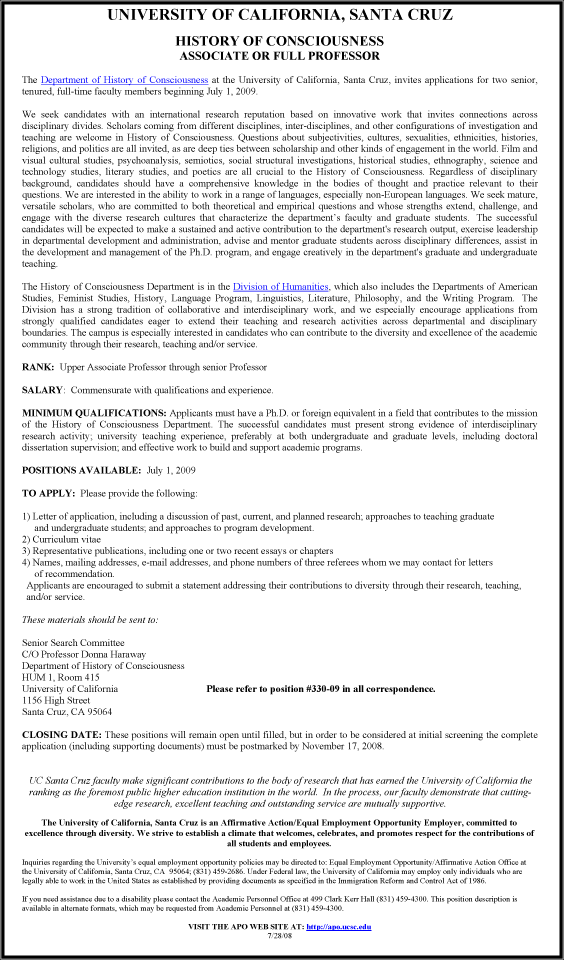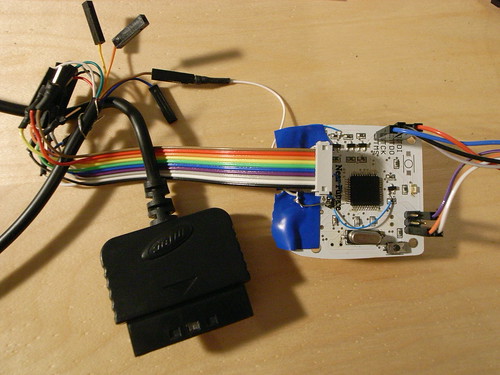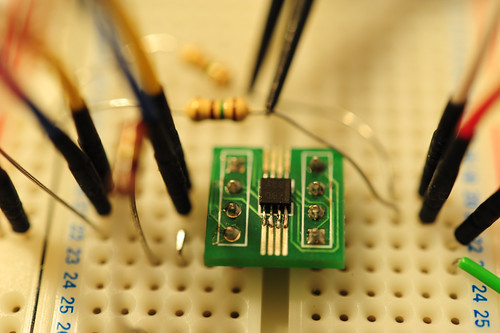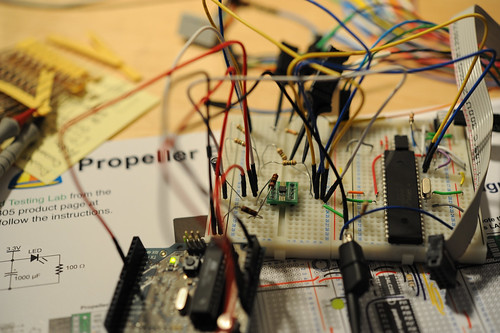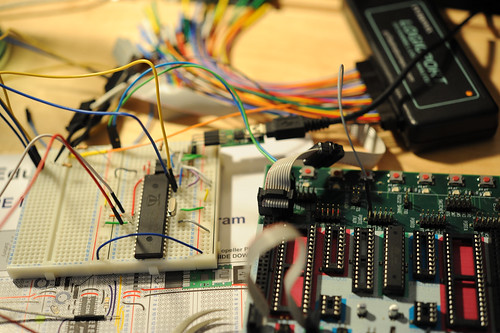
Digital Designers Rediscover Their Hands is an important piece on the ways that “sketching” in hardware can become a way to invigorate a relationship between creativity and materiality. It features some friends from the Sketching ’08 workshop that I was at a few weeks back at RISD. (Link to some stuff.)
The highlight here (besides the nice quotes from Mike Kuniavsky and Dale Dougherty) is the interesting reversal implied. Rather than CAD (computers used to aid design, or computer aided design), we’re seeing some motivation to use physical design as a way to evolve and shift the meaning of computation. The Montessori-like tinkering with hard, material objects that are somehow “energized” through simple electronics (lights, motors, gears, all kinds of electronic sensing devices, switches, accelerometers, etc) can create richer insights into what computation can be. It’s more than just the excitement around a new programming language, or a new operating system. Those are the things that, more often than not, one ends up doing a bit of a shrug after the initial excitement with an updated version of Photoshop or something. The shift is quite a bit more fundamental in the sense that one begins to re-imagine what the machine is and what it can be — what “computation” means begins to shift subtly when it’s no longer just a keyboard/screen/mouse/network assemblage. When a data processing entity is able to have some sense of the physical world around it, more than the sliding of a mouse, or even more than accumulating or dispersing bits of data hither-and-yon across a network, you begin to imagine a world that’s differently invigorating.
The fundamental relationships here are between the digital and physical, or 1st Life and 2nd Life and finding the sliding-scale of in-betweenness. Typically, we might consider “digital” stuff to be things that are somehow ephemeral, on a screen exclusively or in a database. Neglecting the actual physical character of this stuff anyway (it’s all atoms when it comes down to it), thinking this way is a convenient design trope — it makes it easy to construct a binary. Digital stuff is in the computer. Physical things? Well, they’re out in the “real world.”
What this kind of hardware sketching is able to do is create some good trouble for this binary. As soon as you start connecting your computer up to lights and motors and such all, and writing simple programs that allows your program to whir some motors, you’ve created a bridge from the digital to the physical. Your mind wanders away from the binary. Where does it wander too? Well — that’s the exploration. And thinking too hard about where you’re going kind of ruins the fun.
There’s a conceit here that working with your hands (more than punching little plastic squares and pointing at pixels on screens) produces a transformative kind of design. I tend to agree. It’s hard sometimes but mostly because those are muscles (in the hands, as well as the brain) that are little exercised in the world of computer-related stuff. We’re more flexible with the soft, brainiac world of computer creativity. But the world of hand-craft is less flexible. The tools are still infantile in relationship to where the folks living in the near future would like, and need — although many fold more complete, easy-to-use and much less expensive than they were about a dozen years ago when I was more of an electrical engineer than I am now.
Another very interesting note is that the tools are made by the community of practice. It’s like building your own saw and hammer to make your own house. This is important. It has the ring of real barn-raising sensibilities, with the meta-upside being the way the tool-building knits together the community of practitioners who become more able to construct their own visions of what the future looks like. (It’s not for everyone, but reading the Adruino developers’ list can be fascinating if only for the various negotiations and compromises that are shaping what these hammers and saws do, for whom and why.) The tools are open-source, so the process if proactive and engaged, rather than distanced relationships to proprietary tool builders. You can be the future you want, rather than waiting around for someone else’s vision of a closed, stymied future.
Continue reading Sketching From Ideas to Material


